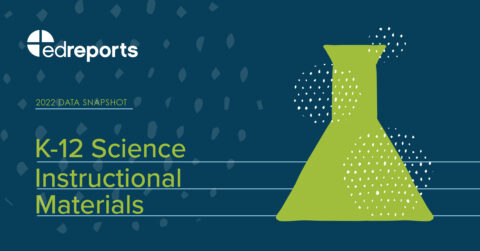High School Science Reviews: Glossary of Terms
Explore key terms and definitions to guide your navigation of our reviews of high school science courses.
Related Resources
article
Data Snapshot: K-12 Science Instructional Materials (2022)
Learn more about the availability and use of high quality K-12 science curriculum in this new report.
news
EdReports Launches Inaugural Reviews of High School Science Curricula
One out of three products reviewed met expectations for alignment to Next Generation Science Standards and other indicators of quality.
article
High School Science: 4 Ways to Boost Student Access to High-Quality Materials
Advance student excellence in high school science by working with educators to use a coherent, comprehensive set of high-quality instructional materials.


